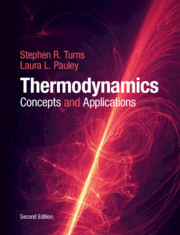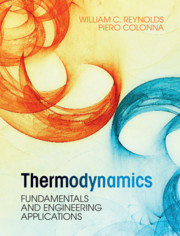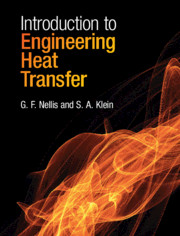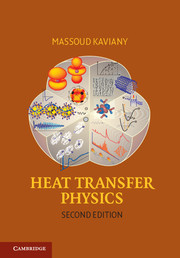Thermodynamics
Fully revised to match the more traditional sequence of course materials, this full-color second edition presents the basic principles and methods of thermodynamics using a clear and engaging style and a wealth of end-of-chapter problems. It includes five new chapters on topics such as mixtures, psychometry, chemical equilibrium, and combustion, and discussion of the Second Law of Thermodynamics has been expanded and divided into two chapters, allowing instructors to introduce the topic using either the cycle analysis in Chapter 6 or the definition of entropy in Chapter 7. Online ancillaries including new LMS testbanks, a password-protected solutions manual, prepared PowerPoint lecture slides, instructional videos, and figures in electronic format are available at www.cambridge.org/thermo
- A 50% increase in real-life examples and end-of-chapter problems, now arranged under section headings for better clarity
- New FE and EES/MATLAB problems; the former encompassing topics on the FE exam and the latter providing students with a structure for good analysis methods that includes checking with hand calculations
- Online instructor resources including LMS testbanks, instructor solutions, teaching slides, instructional videos, and Powerpoint/jpeg versions of figures
- A wide range of pedagogical features, such as overview figures at the beginning of each chapter visually explaining how topics fit into the wider context of thermodynamics; in-text examples, followed by self-test questions, to help students assess their knowledge of the topics discussed; and key concepts and definitions checklists, conceptual questions and problems at the end of every chapter
- NIST software available online via NIST that provides properties for 17 pure fluids and for air
Product details
February 2020Hardback
9781107179714
854 pages
285 × 225 × 42 mm
2.65kg
740 b/w illus. 365 colour illus. 40 tables
Available
Table of Contents
- Conversion factors
- Preface
- Acknowledgements
- 1. Beginnings
- 2. Thermodynamic properties, property relationships, and processes
- 3. Conservation of mass
- 4. Energy and energy transfer
- 5. First law of thermodynamics
- 6. Second law of thermodynamics and some of its consequences
- 7. Entropy and availability
- 8. Thermal-fluid analysis of steady-flow devices
- 9. Systems for power production, propulsion, and heating and cooling
- 10. Ideal-gas mixtures
- 11. Air-vapor mixtures
- 12. Reacting systems
- 13. Chemical and phase equilibrium
- Appendix A. Timeline
- Appendix B. Thermodynamic properties of H2O
- Appendix C. Thermodynamic and thermo-physical properties of air
- Appendix D. Thermodynamic properties of ideal gases and carbon
- Appendix E. Various thermodynamic data
- Appendix F. Thermo-physical properties of selected gases at 1 atm
- Appendix G. Thermo-physical properties of selected liquids
- Appendix H. Thermo-physical properties of hydrocarbon fuels
- Appendix I. Psychrometric charts
- Answers to selected problems
- Index.





